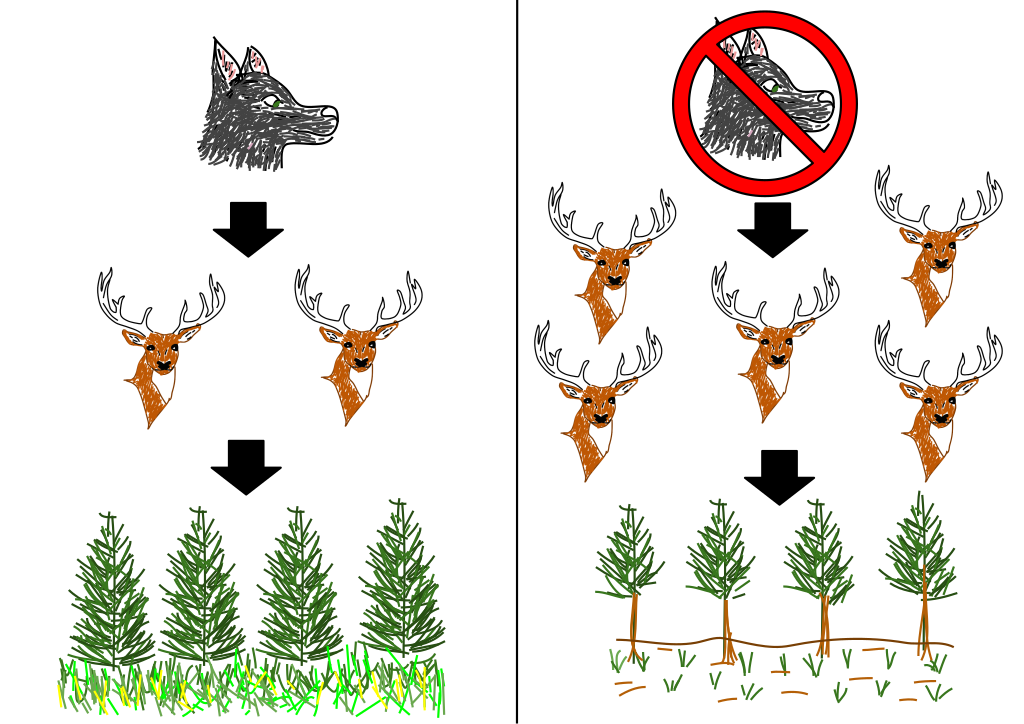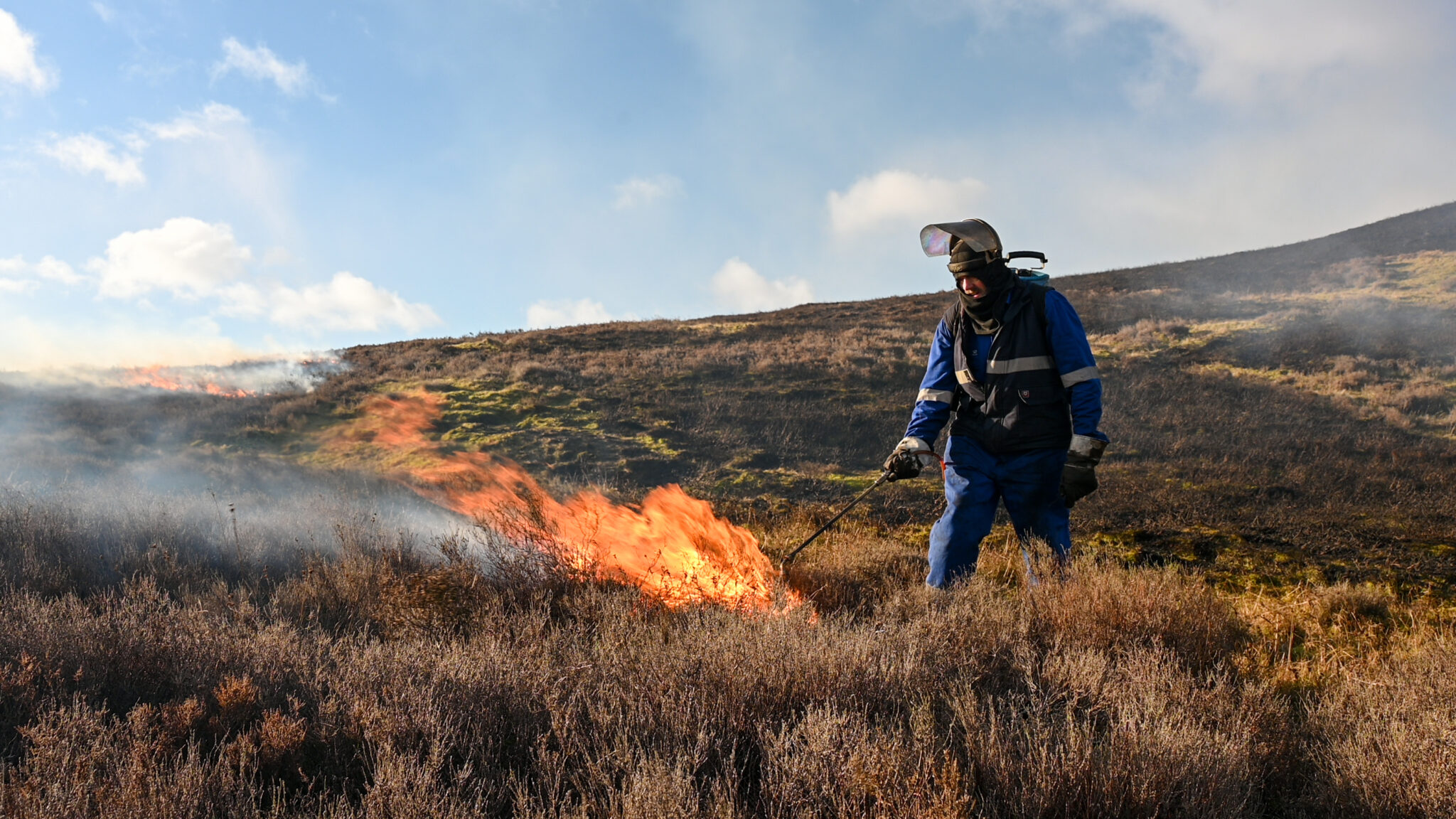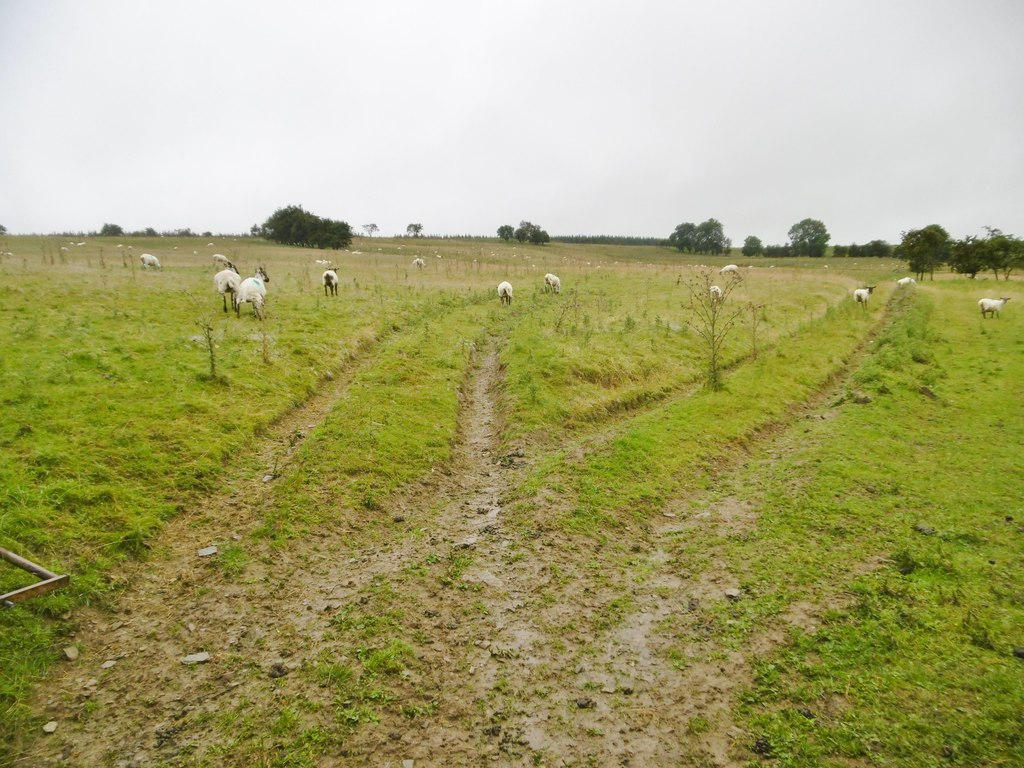IB Syllabus focus:
‘Human activities (e.g., removal of top carnivores, intensive grazing) divert succession, producing a plagioclimax.’
Human activity profoundly alters ecosystems, frequently interrupting natural processes of succession. Such influence often produces plagioclimaxes, stable but human-maintained states differing from natural climax communities.
Human Influence on Succession
Succession and Human Disturbance
Succession is the natural process by which ecosystems change over time as communities replace one another, eventually reaching a stable climax community. However, human interference interrupts this process:
Deforestation removes vegetation and alters soil stability.
Urbanisation introduces impermeable surfaces, preventing succession.
Agriculture resets succession repeatedly by ploughing and planting.
Pollution modifies abiotic factors, favouring only tolerant species.
These influences prevent the development of stable climax communities and instead lead to semi-permanent altered ecosystems.
Plagioclimax Explained
Plagioclimax: A stable community of organisms that develops when human activity halts the natural process of succession, preventing the ecosystem from reaching its climatic climax.
Unlike natural climax communities shaped by environmental conditions, plagioclimaxes result from continual human intervention.
Examples of Plagioclimaxes
Grasslands
Intensive grazing by domesticated livestock prevents woodland succession.
Without grazing, shrubs and trees would establish, leading eventually to forest.
Heathlands
Created by repeated burning or cutting of shrubs.
If left unmanaged, these areas would progress to woodland.
Farmland
Agricultural fields are artificial plagioclimaxes.
Ploughing and sowing annually reset succession to early seral stages.
These examples show how human management sustains communities in states that would otherwise change naturally.
Mechanisms of Human Control
Removal of Top Carnivores
Eliminating predators such as wolves or lions disrupts trophic cascades, altering herbivore populations and vegetation.

Diagram contrasting a food web with and without a top predator, showing how predator loss inflates herbivores and suppresses producers, shifting ecosystem structure toward an alternative state. This clarifies how human actions that remove apex predators can precipitate vegetation change relevant to plagioclimax. Extra detail: the icons reference a North American wolf–deer/elk example, but the principle is general. Source.
Overgrazing by unchecked herbivores may stabilise a plagioclimax dominated by grasses or scrub.
Burning and Cutting
Fire regimes are deliberately used in heathland and savanna management.
Regular cutting of hedgerows or grass prevents ecological succession.
Cutting, mowing, and periodic controlled burning (“swaling”) maintain open heath by removing woody seedlings and recycling nutrients.

Photograph of a controlled heather burn on Scottish moorland (‘muirburn’), creating a patchwork of age classes that holds the community in an early successional state. Such management prevents shrub and tree encroachment, exemplifying a human-maintained plagioclimax. Extra detail: the hosting page discusses experimental trials and policy context beyond the scope of the syllabus. Source.
Grazing
Sheep and cattle grazing maintains open landscapes.
Without livestock, ecosystems would move towards shrubland and forest.
Intensive grazing by domestic herbivores halts succession at grassland/heath stages, creating a managed plagioclimax.

Sheep grazing an open UK pasture bordering heathland; repeated herbivory limits shrub/tree recruitment, keeping vegetation in an early successional state. This illustrates how human-managed stocking can stabilise a plagioclimax. Extra detail: the wider landscape context visible is not discussed in the notes. Source.
Cultivation
Regular ploughing creates bare soil, equivalent to an early primary succession stage.
Continuous planting prevents later seral stages from developing.
Ecological Consequences of Plagioclimaxes
Biodiversity
Some plagioclimaxes support high biodiversity (e.g., heathlands rich in insect species).
Others reduce diversity due to monoculture systems in agriculture.
Soil Quality
Repeated disturbance may reduce soil depth and fertility.
In contrast, managed grasslands can maintain soil stability if grazing is controlled.
Energy Flow
Altered community structure changes productivity and trophic interactions.
Artificial inputs (fertilisers, irrigation) often replace natural cycles.
Distinction from Natural Climax Communities
Natural climatic climax communities arise without disturbance, reflecting local climate and soils.
Plagioclimaxes differ in that:
They are sustained by human activity.
Succession is arrested or reset before natural equilibrium.
They often depend on external inputs (e.g., fertilisers, machinery).
Importance in Environmental Management
Conservation Value
Some plagioclimaxes, though artificial, are now valued for their biodiversity and cultural heritage. Examples include traditional meadows, heathlands, and certain pasture systems.
Challenges
Maintaining a plagioclimax requires ongoing effort.
If management stops, succession resumes and the system changes rapidly.
Balancing conservation aims with sustainability of human activities is critical.
Key Points for IB Students
Human influence alters or halts natural succession.
Plagioclimax is a human-maintained stable community.
Activities such as removal of predators, intensive grazing, burning, and ploughing create plagioclimaxes.
Ecological impacts include changes to biodiversity, soil quality, and energy flow.
Some plagioclimaxes have conservation importance, while others reduce sustainability.
FAQ
A plagioclimax is maintained by ongoing human activity such as grazing, burning, or cultivation. It remains stable only as long as human management continues.
A disclimax, by contrast, results from past disturbance but persists without further intervention. For example, overgrazing might so alter soil quality that the land cannot naturally return to woodland, even if grazing stops.
Heathlands are dominated by heather and shrubs, but the natural succession pathway would usually lead to woodland.
Regular burning prevents tree seedlings from establishing.
Grazing by sheep and cattle maintains open ground.
Cutting and mowing control shrub dominance.
These practices sustain heathlands as valued habitats, even though they are human-maintained.
Traditional farming systems, such as hay meadows or pastoral grazing, halt succession by continually resetting fields to early seral stages.
Unlike modern monocultures, these systems often support high biodiversity because they combine low-intensity grazing, rotational cutting, and mixed plant species.
If abandoned, these landscapes would progress towards shrubland and forest, losing their open character.
Yes, some plagioclimaxes support species that depend on open or early successional habitats.
Meadows support pollinators like bees and butterflies.
Heathlands sustain reptiles, ground-nesting birds, and rare insects.
Grazed grasslands preserve plant diversity by limiting dominant competitors.
Conservation programmes sometimes deliberately maintain plagioclimaxes for their ecological and cultural value.
Maintaining a plagioclimax requires consistent effort and resources.
Without burning, mowing, or grazing, succession quickly resumes.
Over-management can damage soil or reduce biodiversity.
Climate change adds complexity, as altered rainfall or temperature may shift successional dynamics.
These challenges mean managers must balance ecological goals with practical sustainability.
Practice Questions
Question 1 (2 marks)
Define the term plagioclimax and give one example of how human activity can create it.
Mark Scheme:
1 mark for correct definition: a stable community maintained by human activity that prevents succession reaching a climatic climax.
1 mark for a suitable example, e.g., heathland maintained by burning, farmland maintained by ploughing, or grasslands maintained by intensive grazing.
Question 2 (5 marks)
Explain how human activities can divert natural succession to create plagioclimaxes, using two specific examples.
Mark Scheme:
Up to 2 marks for clear explanation of the process: human intervention halts succession, preventing the establishment of a natural climax community.
1 mark for first specific example (e.g., intensive grazing preventing woodland regeneration).
1 mark for second specific example (e.g., removal of top carnivores leading to overgrazing and suppression of succession).
1 mark for linking examples to the concept of plagioclimax, showing understanding that these are stable but artificial communities sustained by human influence.

